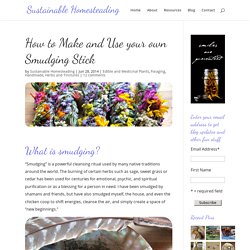

Make your own natural sunscreen. It's starting to get to sunburn season here in Southern Minnesota.

Wearing hats and staying in the shade isn't really cutting it the way it does around here the rest of the year. With that said, there's some pretty scary ingredients in even "natural" sunscreens. One alternative is to make your own. Not only is this generally much cheaper in the long run, but you know exactly what's in the product and can control everything. For a super simple recipe, simply mix zinc oxide with shea butter in a ratio of 1:10 (one part zinc oxide to ten parts shea butter). There are also many more sophisticated recipes online. Little House in the Suburbs has a sunscreen recipe that uses avocado oil, shea butter, beeswax, soy lecithin, vitamin E capsules, aloe vera gel and zinc oxide.
Marilyn Farms has a sunblock recipe that uses shea butter, sunflower oil, vitamin E oil, eucalyptus essential oil, zinc oxide and titanium dioxide. What do the ingredients do? Enjoy the summer! Spring Cleaning Your Natural Medicine Cabinet. Gifts from the Garden: Homegrown Smudge Sticks. Smudge sticks are tightly bound bundles of dried woody, resinous herbs, that are slowly burned as a way to purify and cleanse the air.

While the roots of burning a smudge stick, or smudging, is in North American Native purification rites and ceremony, they can be used by anyone to bring the woody smell of the outdoors inside. If you have a garden, chances are good that you have enough ingredients to make at least one smudge stick. The traditional and most popular herbs used in smudging ceremonies are white sage (Salvia apiana), Cedar (Thuja), Sweetgrass (Hierochloe odorata), sagebrush (Artemisia californica), and mugwort (Artemisia vulgaris). However, in my travels I have noticed that the smudging sticks available vary by region and there seems to be a lot of opportunity to branch out (so to speak) with other woody, resinous herbs including, but not limited to: Harvest herbs on a sunny and dry day.
How to Bind an Herbal Smudge Stick Step 1. How to Use a Smudge Stick. About Sacred Herbs & Smudging Ceremonies. Sacred & Blessing Herbs & Smudging View our selection of Sacred Herbs and Incense Resins With the discovery of fire, early humans began to notice that aromatic smoke was produced by burning dried plants.

As herbs, roots, resins and barks are changed from their physical form (of this world), they are changed by the element of fire into smoke (spirit world form). This transformation is evidence of the spirit within substances. Throughout human history aromatic plants have been used in the daily activities of people from every culture. As time has passed, this connection between people and plants is being forgotten.
Smudging The act of smudging is done with a smudge bowl or Abalone Shell with the appropriate herbs directly lit or burned on a coal or Charcoal Tablet. Smudging in the Seven Directions Facing East - I welcome the energy of the beginning way, the rising sun at the beginning of the day and the light of illumination. How to Make and Use your own Smudging Stick - Sustainable Homesteading. What is smudging?

“Smudging” is a powerful cleansing ritual used by many native traditions around the world. The burning of certain herbs such as sage, sweet grass or cedar has been used for centuries for emotional, psychic, and spiritual purification or as a blessing for a person in need. I have been smudged by shamans and friends, but have also smudged myself, the house, and even the chicken coop to shift energies, cleanse the air, and simply create a space of “new beginnings.”
The healing properties of sage Because of its effective purifying energies, sage has been considered sacred by many Native American Indians. Home Remedy for Nausea and Indigestion: Ginger Candy. Ginger is considered a warming and spicy flavored herb.

The warming nature of ginger is reflected in the fact that ginger can be used against various illnesses caused by cold. Ginger is also used in cases of food poisoning and nausea, poor digestion, diarrhea, lack of appetite, hand and feet feel cold. You can have a fresh small piece of ginger, if you have any above mentioned illness. Some people (like me) don't like the raw taste of ginger. So, here is the solution. Ginger candy is the best home remedy for many illnesses in South India. This is the simplest and best medicine for sore throat, nausea, cold, good digestion, giddiness, sinus problem, especially good for 1st trimester morning sickness. Serving suggestion : A CANDY in A DAY. Few days back, I got this recipe from my mom.